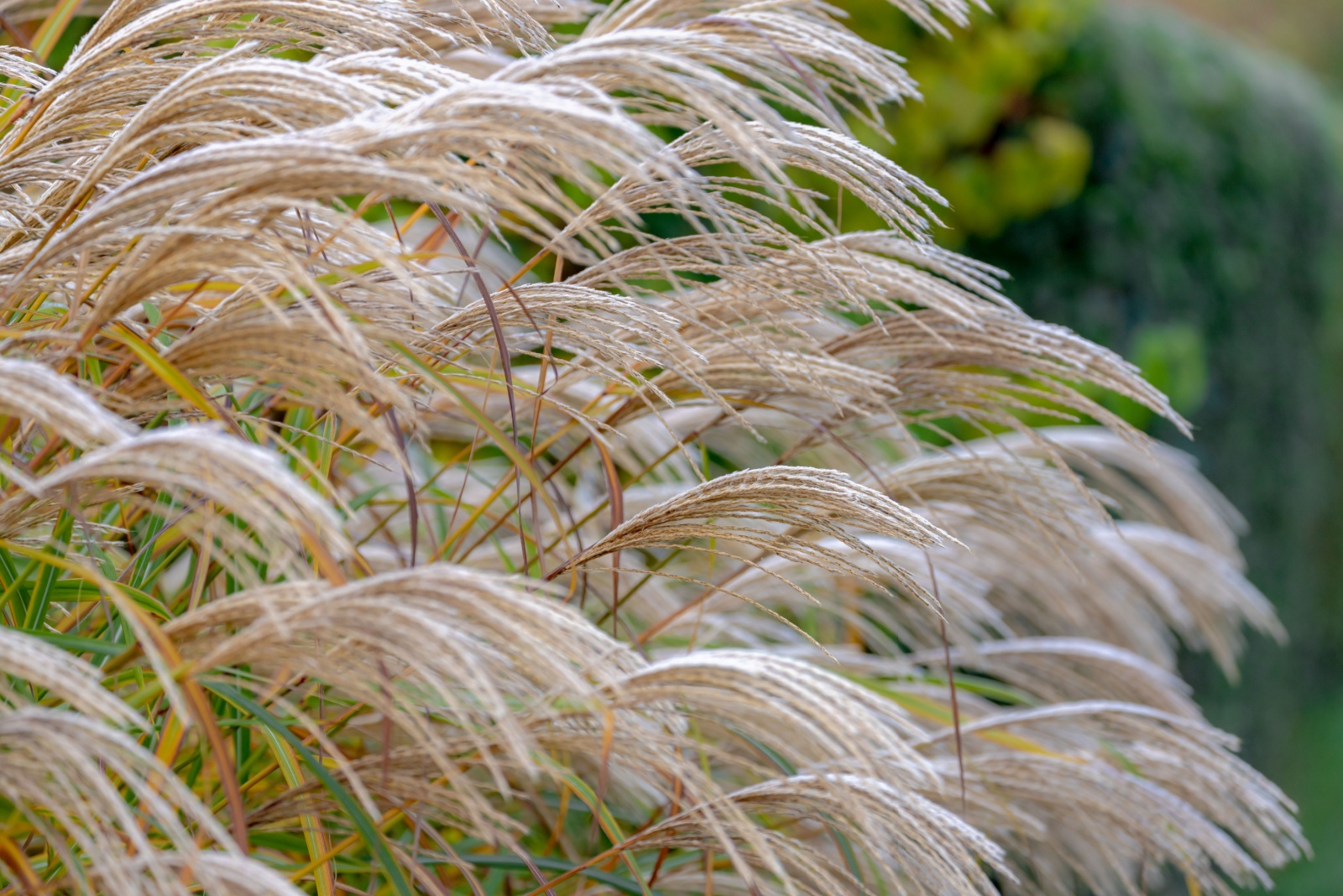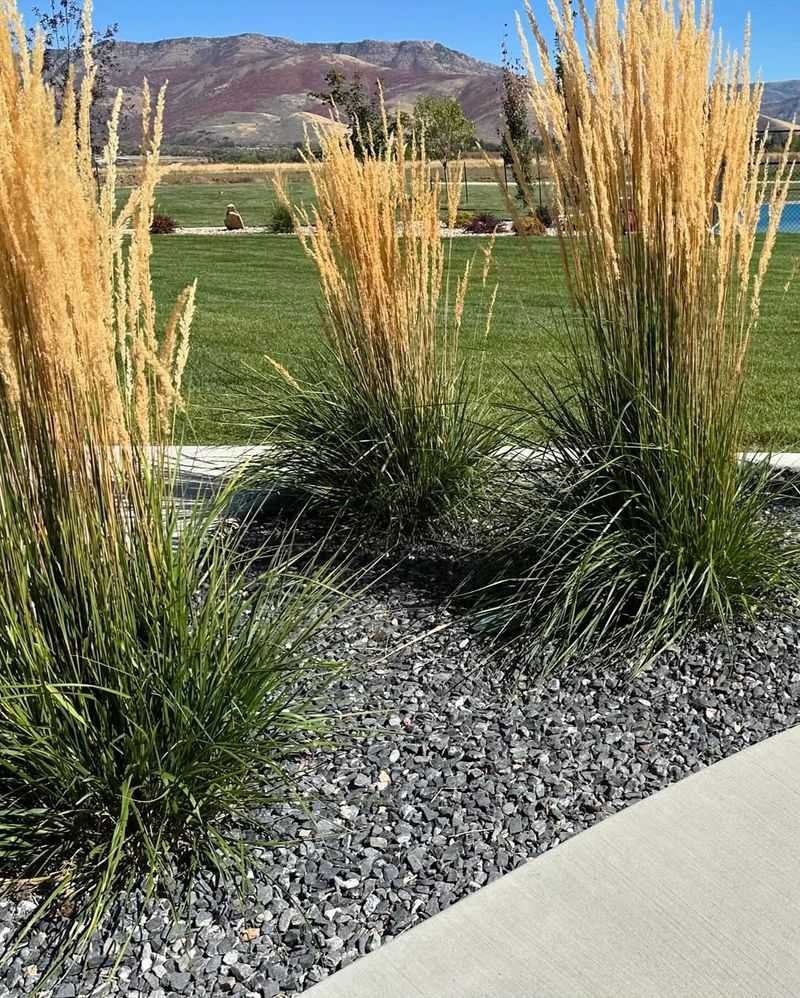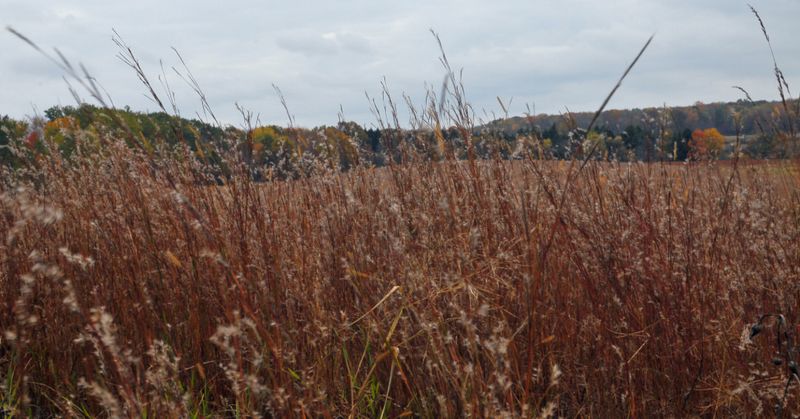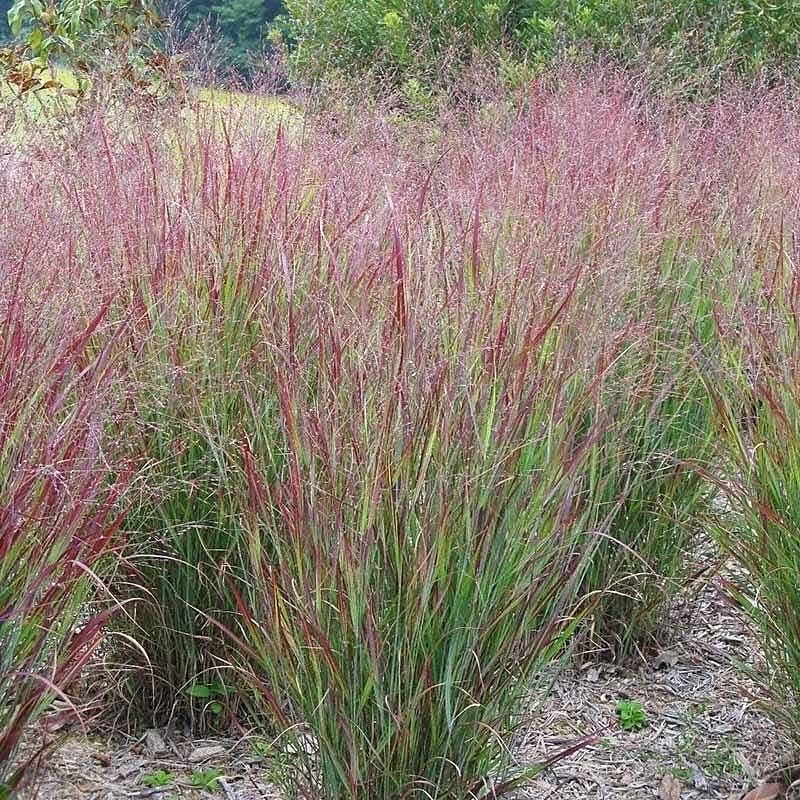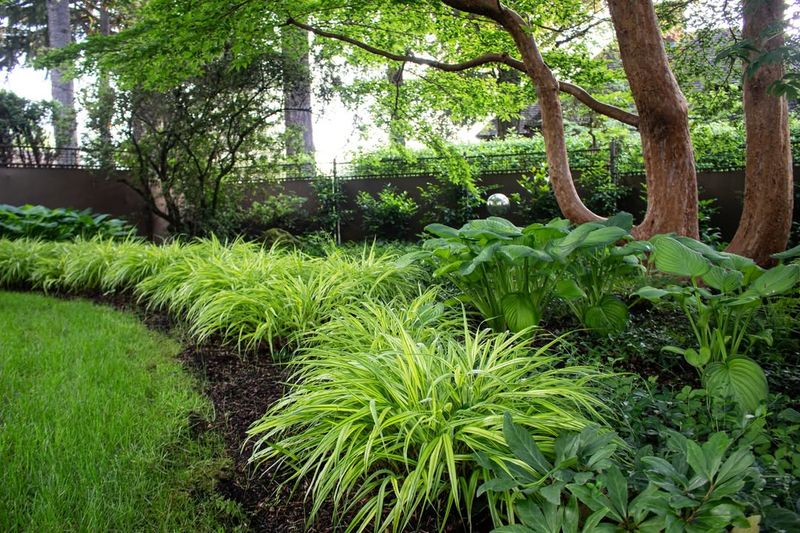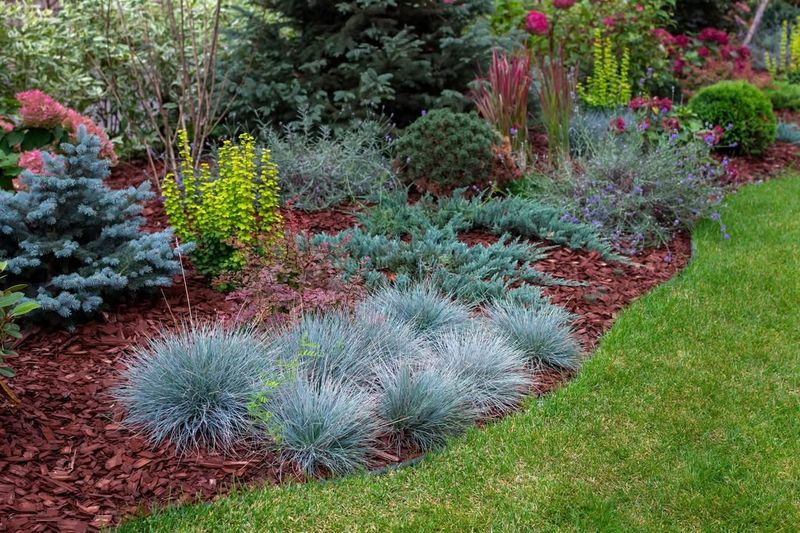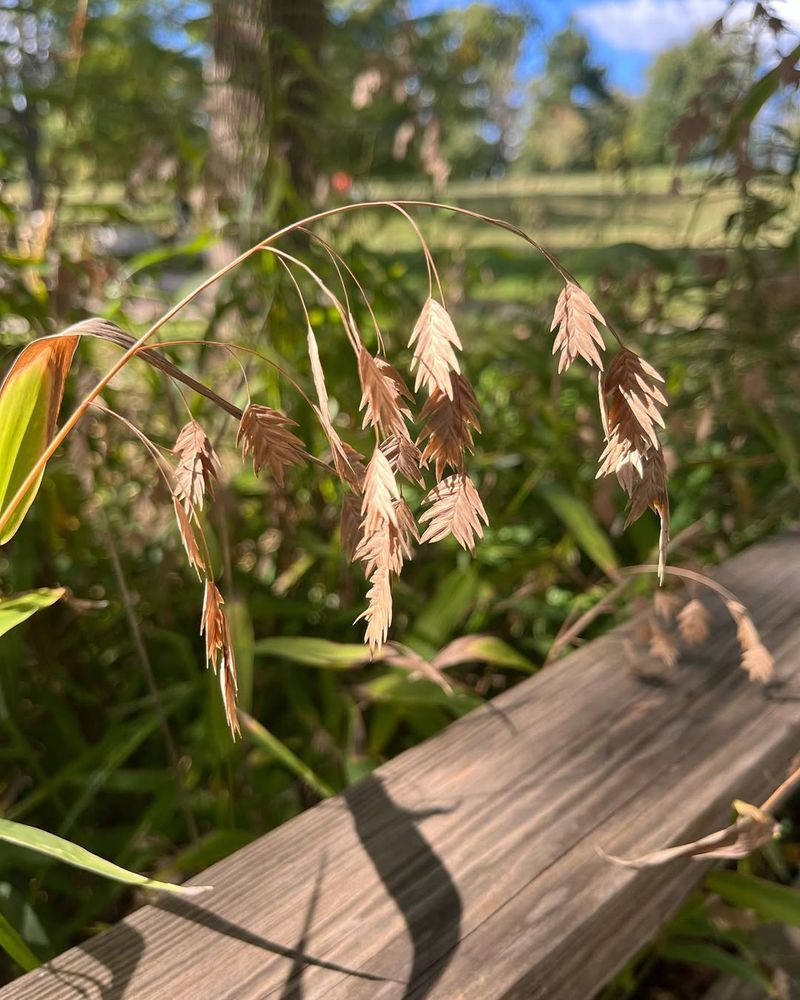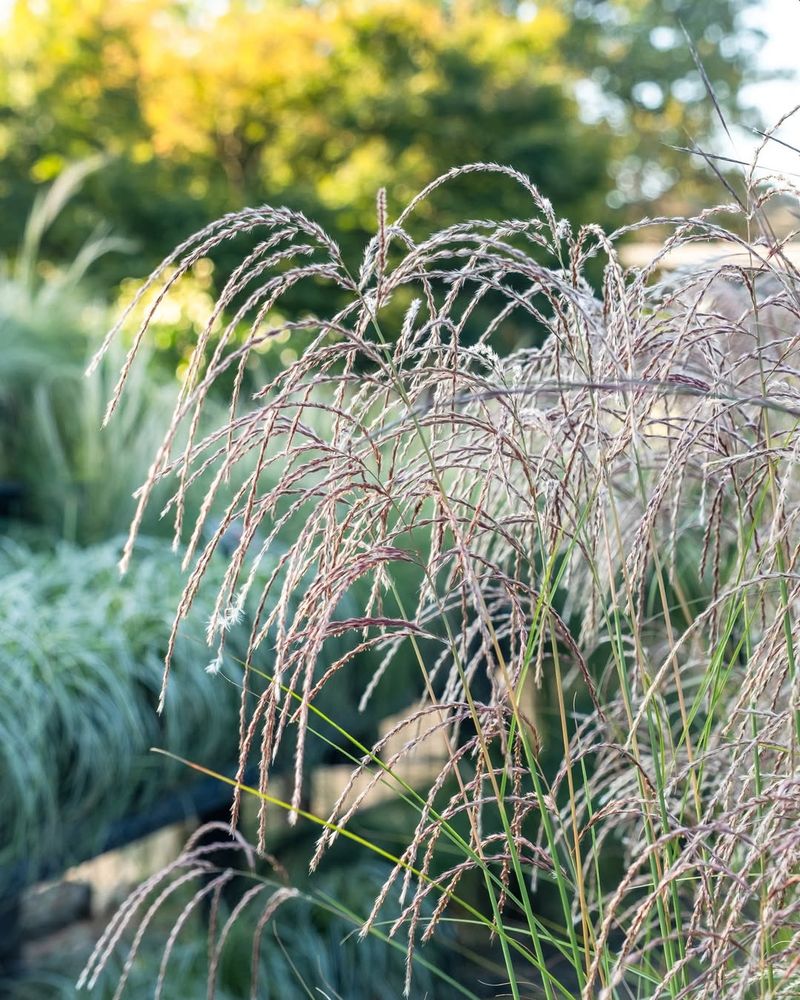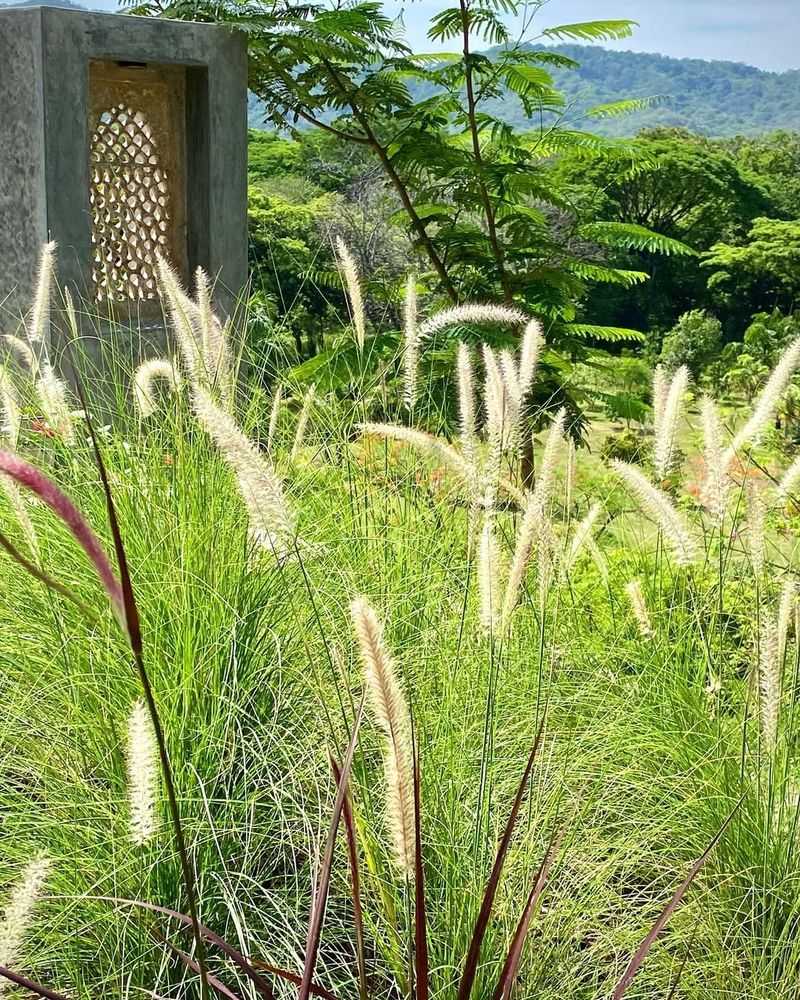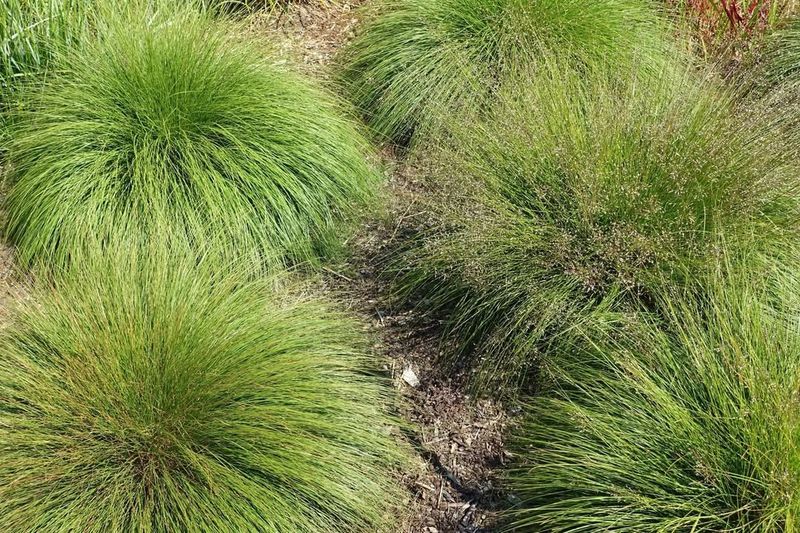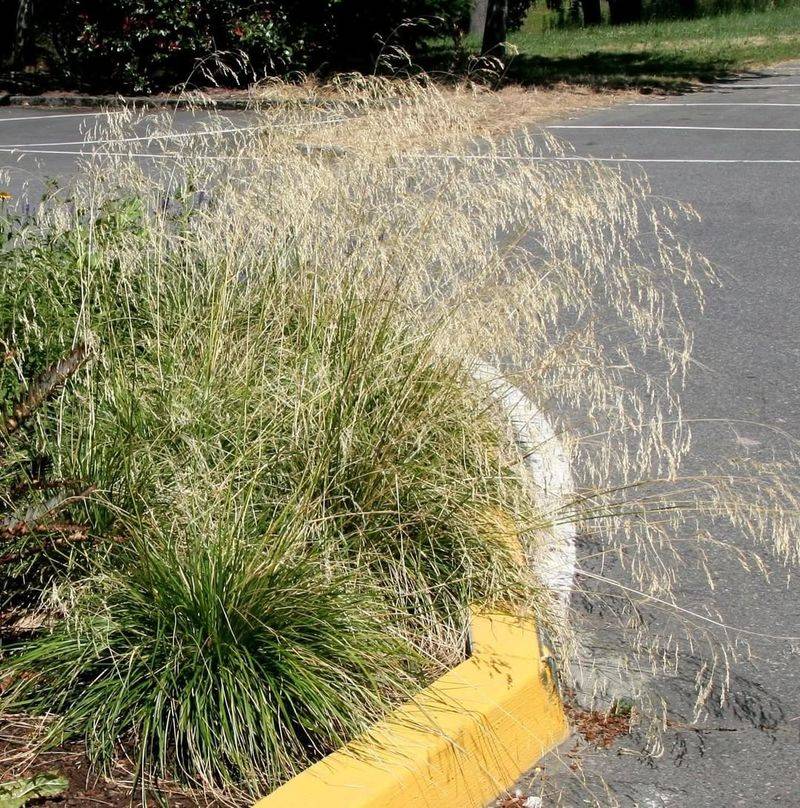Fall is the perfect time to plant ornamental grasses in Pennsylvania, giving them a chance to establish strong roots before winter arrives. Getting these beauties in the ground before frost hits means they’ll be ready to thrive come spring.
If you want soft textures, bold colors, or movement in your garden, perennial grasses offer year-round interest with minimal fuss.
1. Karl Foerster Feather Reed Grass
Upright and elegant, Karl Foerster stands tall like a natural fence in any garden bed. Its wheat-colored plumes appear in early summer and hold their shape through winter storms, providing structure when other plants fade.
Pennsylvania gardeners love this grass because it tolerates clay soil and doesn’t flop over. Plant it in full sun to partial shade, spacing them about two feet apart. Once established, it requires almost no maintenance and looks stunning alongside purple coneflowers or black-eyed Susans.
2. Little Bluestem
Native to Pennsylvania’s prairies, Little Bluestem brings a wild beauty that changes with the seasons. Summer’s blue-green leaves transform into fiery copper and burgundy tones as temperatures drop, creating a natural fireworks display.
This grass thrives in poor soil where other plants struggle, making it ideal for rocky or sandy spots. Deer usually leave it alone, which is a huge bonus for Pennsylvania homeowners. Its fluffy white seed heads catch the light beautifully and provide food for songbirds throughout winter.
3. Switchgrass
Tall and airy, Switchgrass sways gracefully with every breeze, adding movement to your landscape. Its delicate pink or burgundy seed heads float above the foliage like clouds, creating a dreamy effect in autumn light.
As a Pennsylvania native, it handles extreme weather without complaint and adapts to wet or dry conditions. Plant it as a privacy screen or backdrop for shorter perennials. Switchgrass also provides excellent winter habitat for beneficial insects and small wildlife seeking shelter from harsh conditions.
4. Japanese Forest Grass
Golden cascades of foliage make Japanese Forest Grass a showstopper in shady spots where few plants shine. Unlike most grasses that demand sun, this beauty thrives under tree canopies and along woodland edges.
Its bright chartreuse or variegated leaves practically glow in low light, brightening dark corners instantly. Pennsylvania’s humid summers suit it perfectly, though it appreciates consistent moisture. Pair it with hostas and ferns for a textural contrast that feels both exotic and natural in woodland gardens.
5. Blue Fescue
Compact and tidy, Blue Fescue forms perfect silvery-blue mounds that look like they belong in a fairy garden. Its fine, needle-like texture contrasts beautifully with broad-leaved perennials and adds a cool-toned accent to hot-colored flower beds.
Pennsylvania gardeners appreciate its drought tolerance once roots settle in. Plant several together for a striking border or use single clumps as focal points in rock gardens. Blue Fescue stays low and manageable, rarely exceeding twelve inches tall, making it perfect for smaller spaces.
6. Northern Sea Oats
Dangling seed heads that resemble actual oats give this native grass its charming name and unique appearance. The flat, drooping seedheads rattle gently in the wind, creating subtle sounds that add another sensory dimension to your garden.
Shade-tolerant and adaptable, Northern Sea Oats thrive in Pennsylvania’s woodland gardens where sunlight is limited. They spread slowly through self-seeding but aren’t aggressive. The bronze fall color and persistent seedheads provide winter interest long after frost arrives, making them four-season performers.
7. Maiden Grass
Fountain-like clumps of Maiden Grass create dramatic focal points that command attention in any landscape. Silver-pink plumes emerge in late summer, rising above arching foliage to heights of six feet or more.
This grass makes a bold statement as a specimen plant or planted in groups for screening. Pennsylvania’s climate suits it perfectly, though it appreciates well-drained soil. The dried foliage and plumes remain attractive throughout winter, rustling in cold winds and catching snow beautifully. Cut back in early spring before new growth appears.
8. Fountain Grass
Bottlebrush plumes in shades of pink, burgundy, or cream arch gracefully over mounded foliage, earning this grass its fountain-like name. The soft, fuzzy flowers appear in midsummer and persist through fall, providing months of color and texture.
Pennsylvania gardeners find Fountain Grass versatile for borders, containers, or mass plantings. It prefers full sun and well-drained soil but adapts to various conditions. Some varieties are more cold-hardy than others, so choose Pennsylvania-appropriate cultivars for reliable winter survival and spring return.
9. Prairie Dropseed
Fine as hair, Prairie Dropseed’s delicate foliage forms tidy mounds that seem to glow golden-orange in autumn sunlight. This Pennsylvania native produces airy seed heads that smell surprisingly like fresh popcorn or cilantro when they emerge.
Extremely low-maintenance, it tolerates drought, poor soil, and deer browsing without losing its charm. The compact size makes it ideal for smaller gardens or lining pathways. Prairie Dropseed’s graceful texture softens hard edges and provides a wispy contrast to bolder perennials throughout the growing season.
10. Tufted Hair Grass
Delicate and cloud-like, Tufted Hair Grass sends up airy flower panicles that shimmer like gossamer in morning light. The dark green foliage forms neat tufts that stay attractive from spring through fall, even in partial shade.
Pennsylvania’s cooler regions suit this grass particularly well, as it prefers moderate temperatures. Plant it along stream banks or in rain gardens where soil stays consistently moist. The golden-tan fall color and persistent seedheads extend interest into winter, while the fine texture complements bolder companions beautifully.

